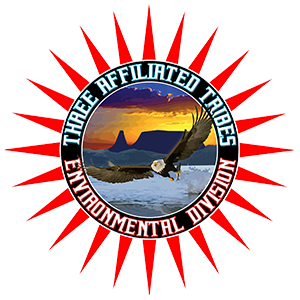BROWNFIELDS
STAFF
What is a Brownfields Site?
Brownfields sites are abandoned, idled or underused industrial and commercial properties where development, redevelopment or expansion is complicated by actual or suspected environmental contamination. By investigating and cleaning up brownfields sites, many of which are abandoned areas that may impose an environmental risk to the local community, development can take place with less concern about legal liabilities related to site contamination. This benefits the Three Affiliated Tribes by bringing jobs to the area, making abandoned property functional, and possibly preserving sites that have historic and cultural significance to the community.
The definition of a brownfields site is found in Public Law 107-118 (H.R. 2869) "Small business Liability Relief and Brownfields Revitalization Act" signed into law January 11, 2002. For more information on the definition of a brownfields site and information on brownfields, please see Brownfields | US EPA.
CERCLA Section 128(a) lists the Four Elements of a Tribal Response (Brownfields) program:
(1) Timely survey and inventory of brownfield sites.
(2) Oversight and enforcement authorities or other mechanisms, and resources, that are adequate to ensure that a response action will protect human health and the environment.
(3) Mechanisms and resources to provide meaningful opportunities for public participation.
(4) Mechanisms for approval of a cleanup plan, and a requirement for verification by and certification or similar documentation from the State, an Indian tribe, or a licensed site professional to the person conducting a response action indicating that the response is complete.
CERCLA 128(b) requires a PUBLIC RECORD: maintain, update not less than annually, and make available to the public a record of sites, by name and location, at which response actions have been completed in the previous year and are planned to be addressed under the State program that specifically governs response actions for the protection of public health and the environment in the upcoming year.
All of these Elements are reflected in the Three Affiliated Tribes Title 15 .
Environmental Code Chapter 15.1: Solid And Hazardous Waste Management and Remediation Code adopted in December of 2011 by the TAT Council.
A Brownfields Tribal Response Program is required by the EPA to have certain components. Listed below are the general components of our Tribal Response Program:
Timely Survey and Inventory
- Establish a system to identify, prioritize, and survey brownfields sites on the Reservation
- Review databases and other sources of existing information to identify sites
- Update existing databases with newly assessed brownfields site information
Environmental Assessments
- Conduct assessments on potential brownfields sites by trained staff or by hiring a qualified contractor
- Estimate costs for cleanup for a site
- Develop a reuse/redevelopment plan for sites taking into consideration the contamination issues
Public Record
- Update annually (or more often if appropriate)
- Include site locations, responses, and future plans
PUBLIC RECORD REQUIREMENT
-
In order to be eligible for section 128(a) funding, states and tribes (including those with MOAs) must establish and maintain a public record system, described below, in order to receive funds. Specifically, under section 128(b)(1)(C)
Public Record Files, as of 3/6/2014:
Public Participation
- Incorporate brownfields information into current public outreach activities
- Establish procedure for prior notice and opportunity for public comment as well as a mechanism by which an affected person may request a site assessment be conducted
Cleanup
- Create a draft cleanup and verification plan and implement a review process
- Design a process by which cleanup plans and efforts can be certified and include procedures, documentation, and a step by step process
Oversight and Enforcement
- Establish a follow-up inspection protocol to survey any new brownfields sites
- Research existing environmental oversight and enforcement authorities
- Develop administrative procedures to assure response actions are conducted in a lawful manner and protect human health and the environment.
Brownfields Sites Can Potentially Include the Following:
- Abandoned warehouses
- Abandoned industrial buildings
- Old buildings/factories/gas stations
- Landfills
- Open/illegal dumping (particularly involving hazardous wastes like gas, oil, pesticides, paints, etc).
- Methamphetamine labs: Materials found at these sites are extremely hazardous; don't investigate yourself. If you suspect a meth lab in operation or discover a location you suspect might be a former meth lab, call the police immediately.
- Above-ground or underground fuel storage tanks that are abandoned or suspected to be leaking
What is Not a Brownfields Site:
- A site the owner is liable for and that is being used as an open dump
- A site where a removal action by another organization or agency has or is occurring
Brownsfields Links
|
